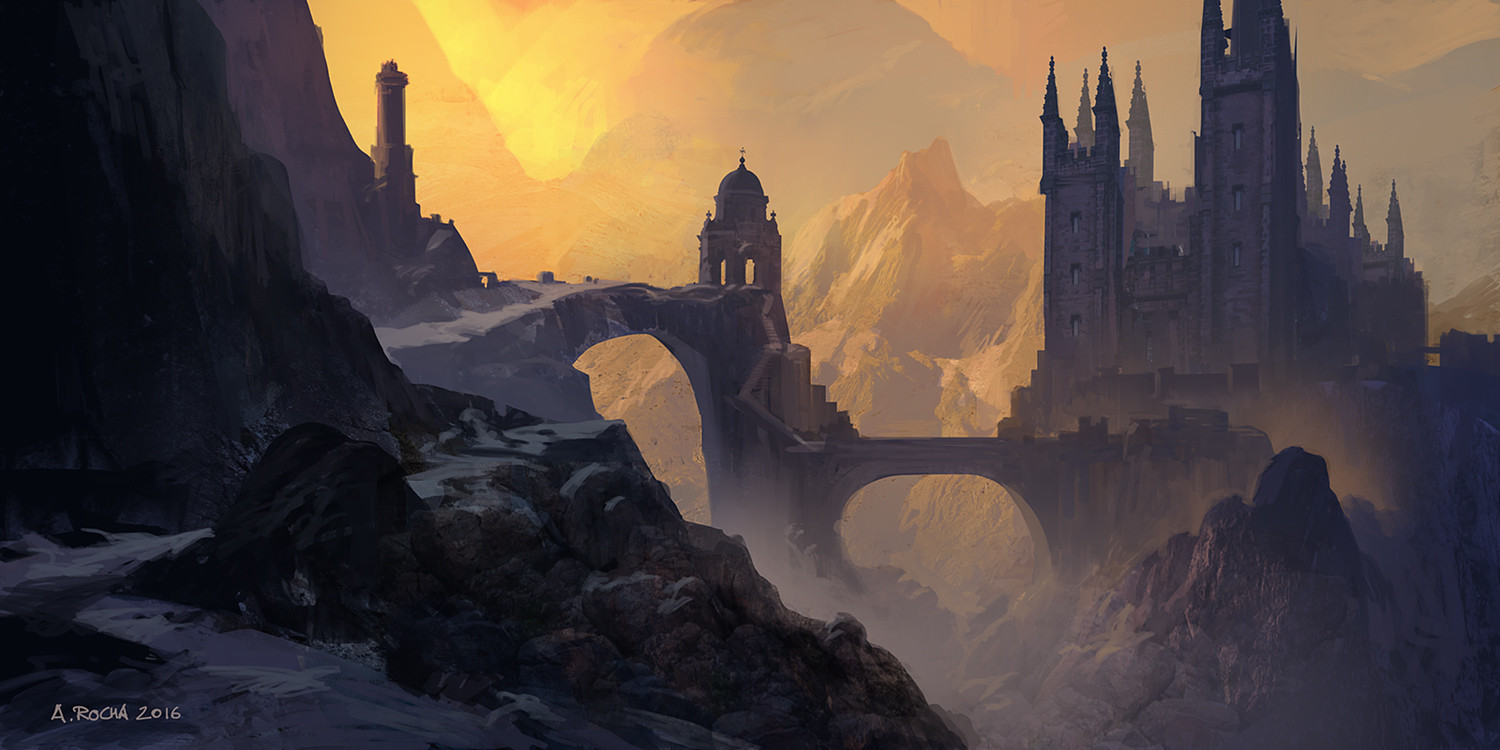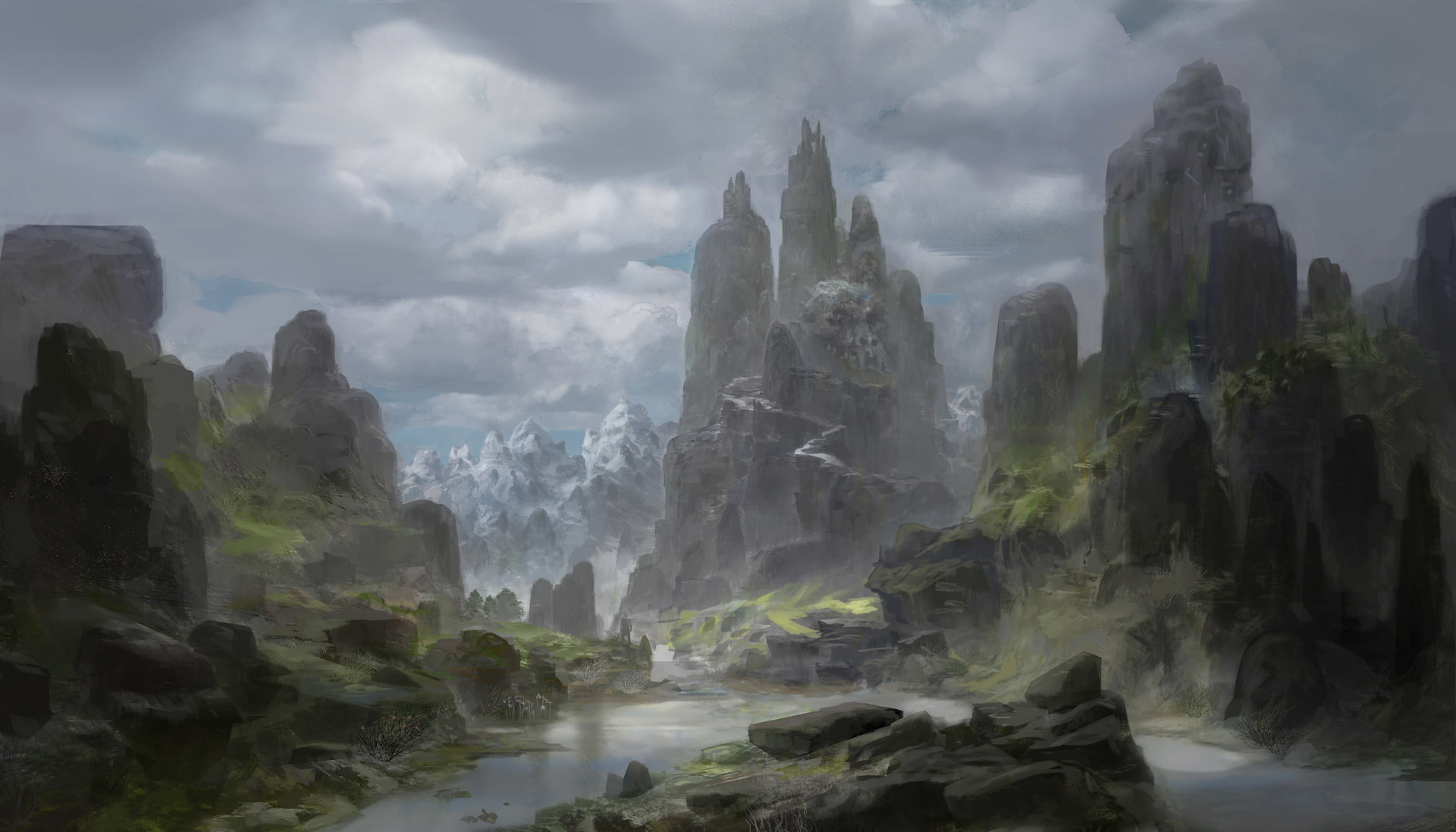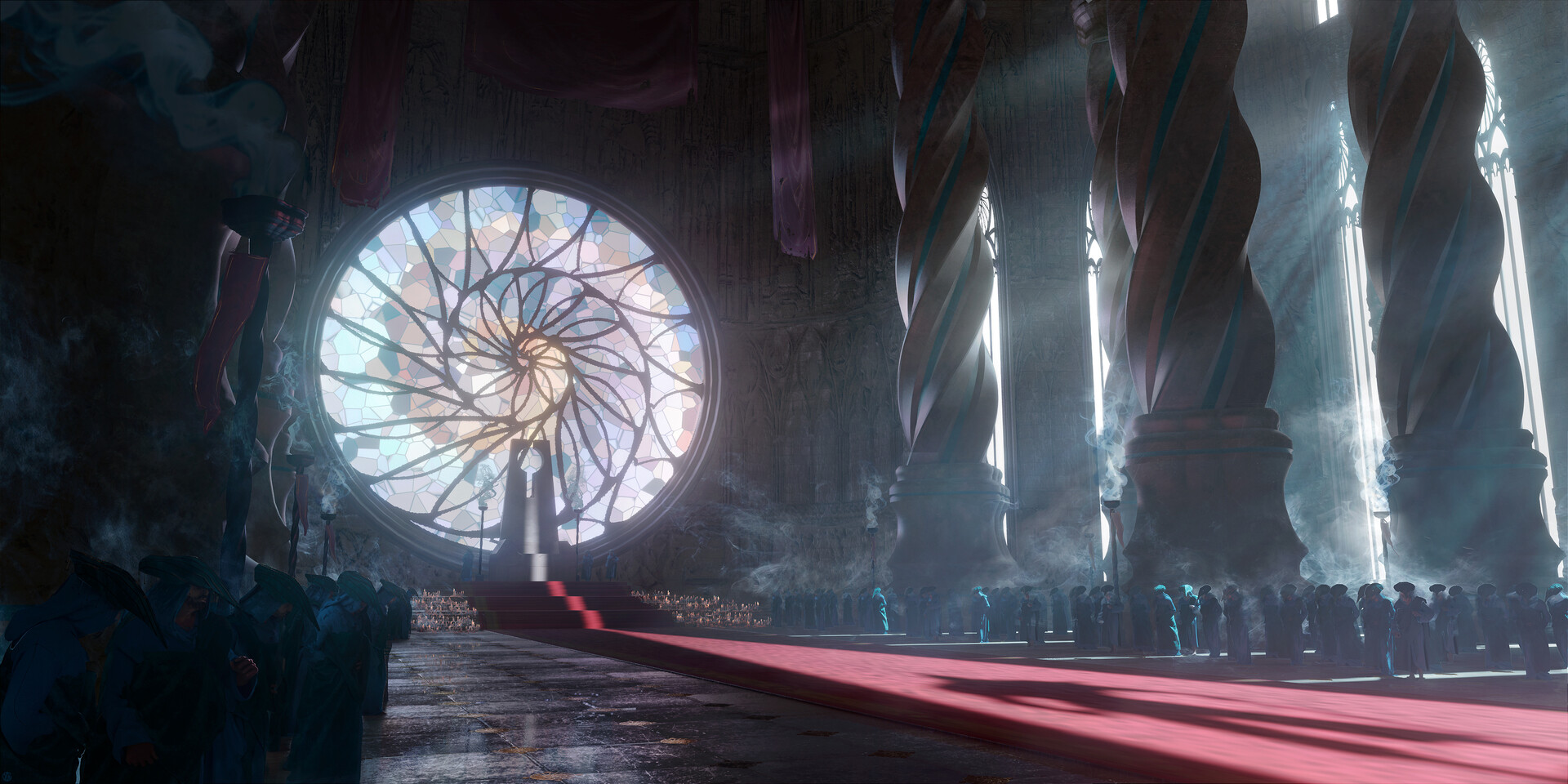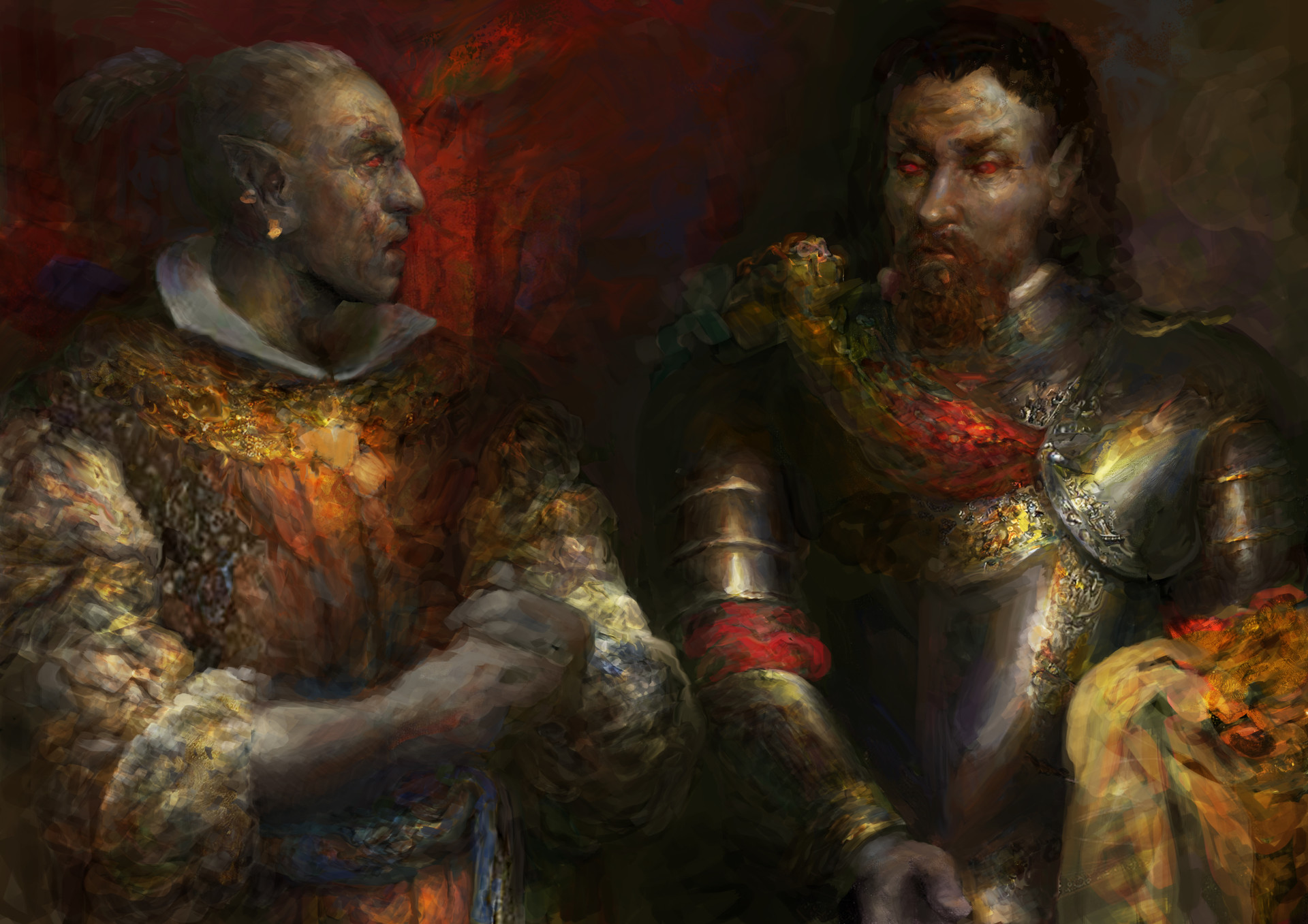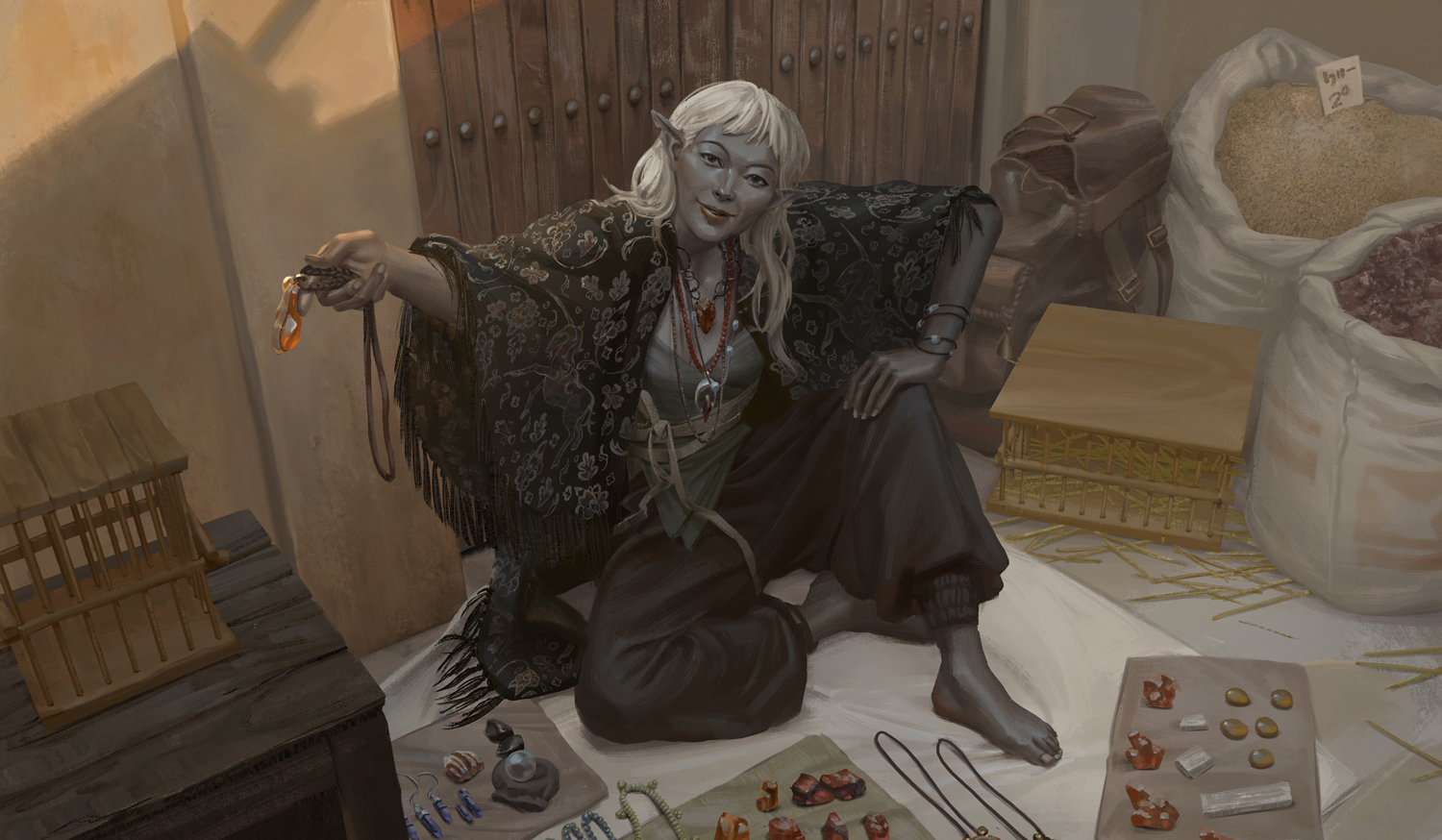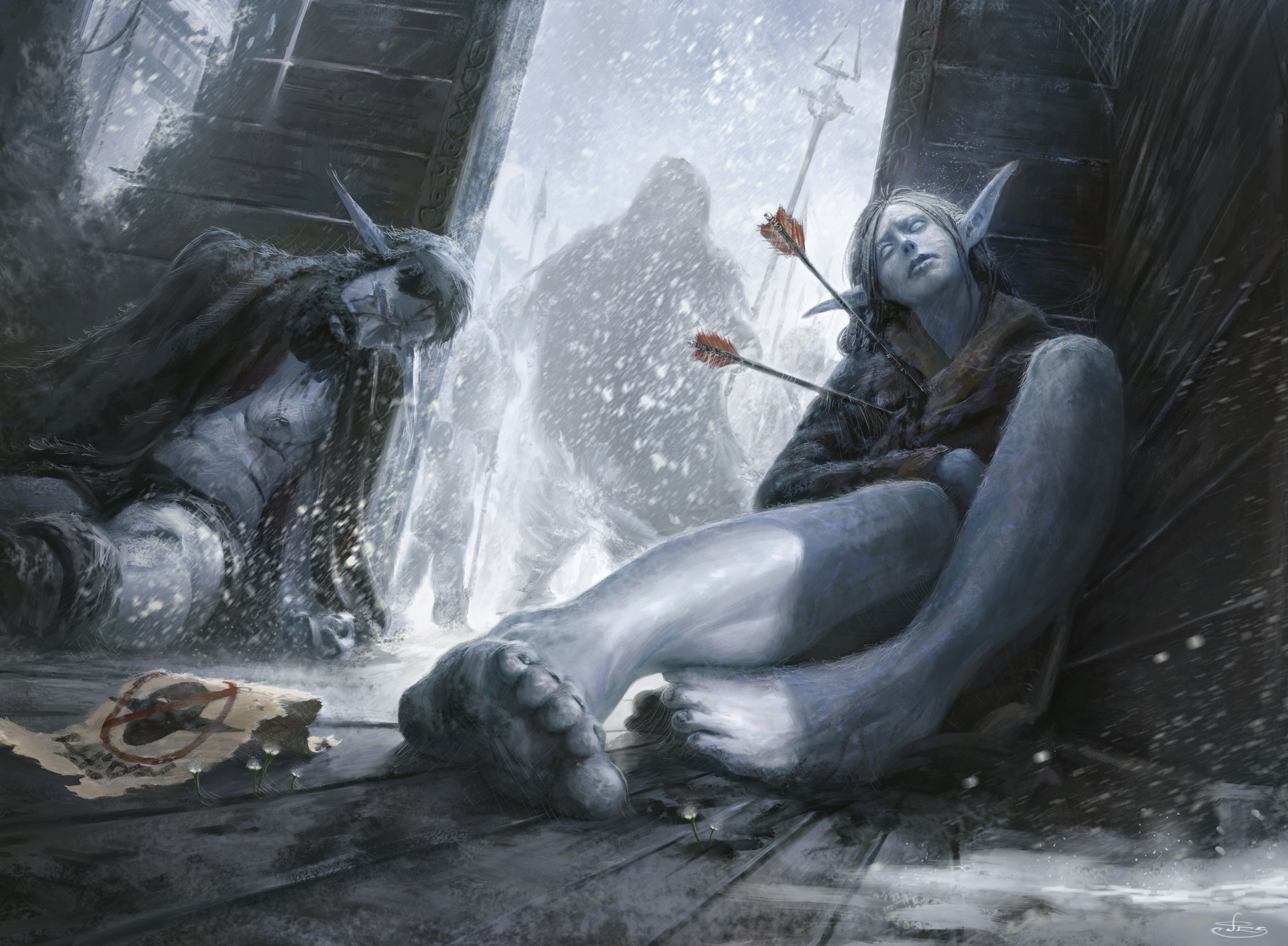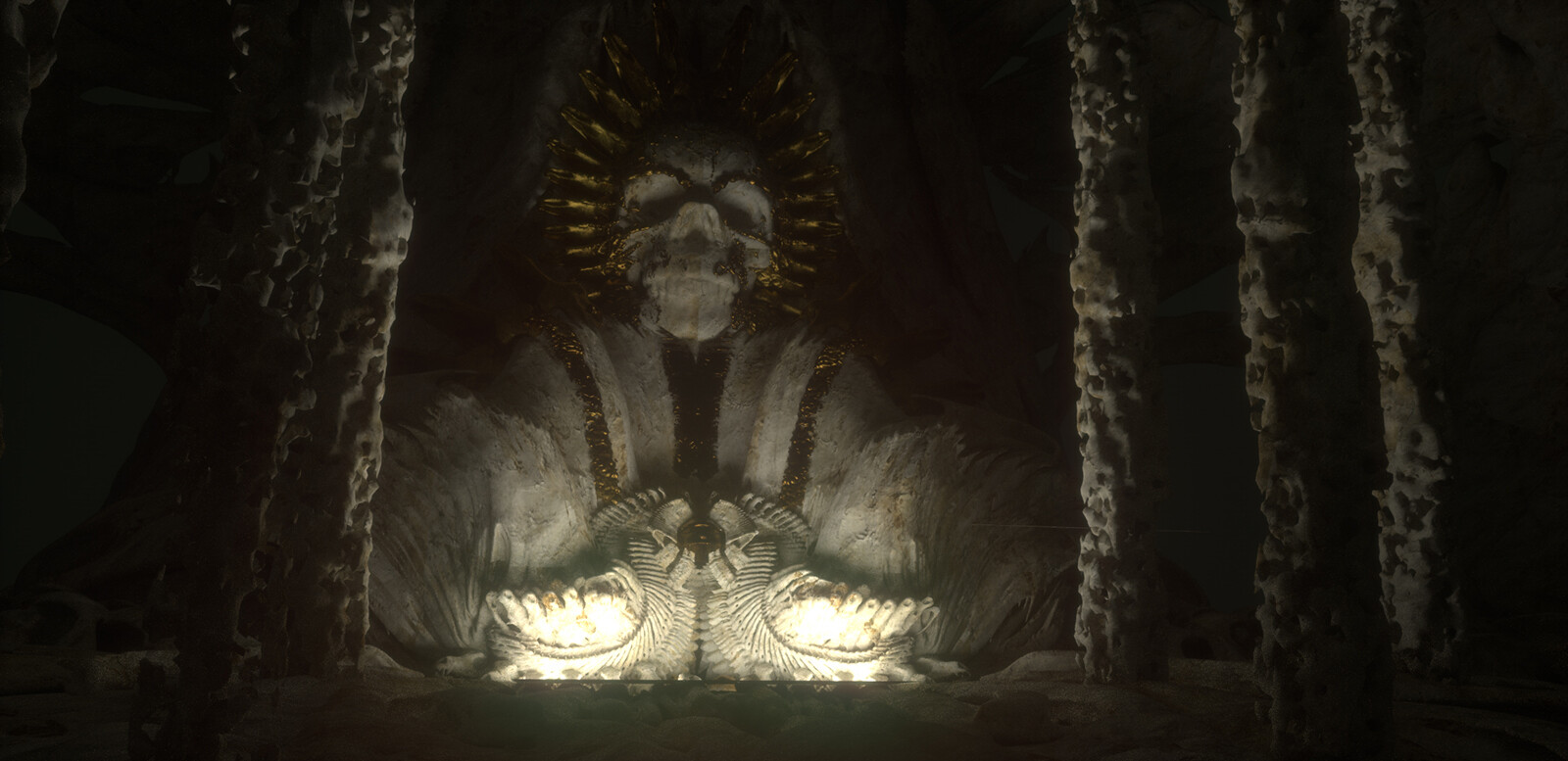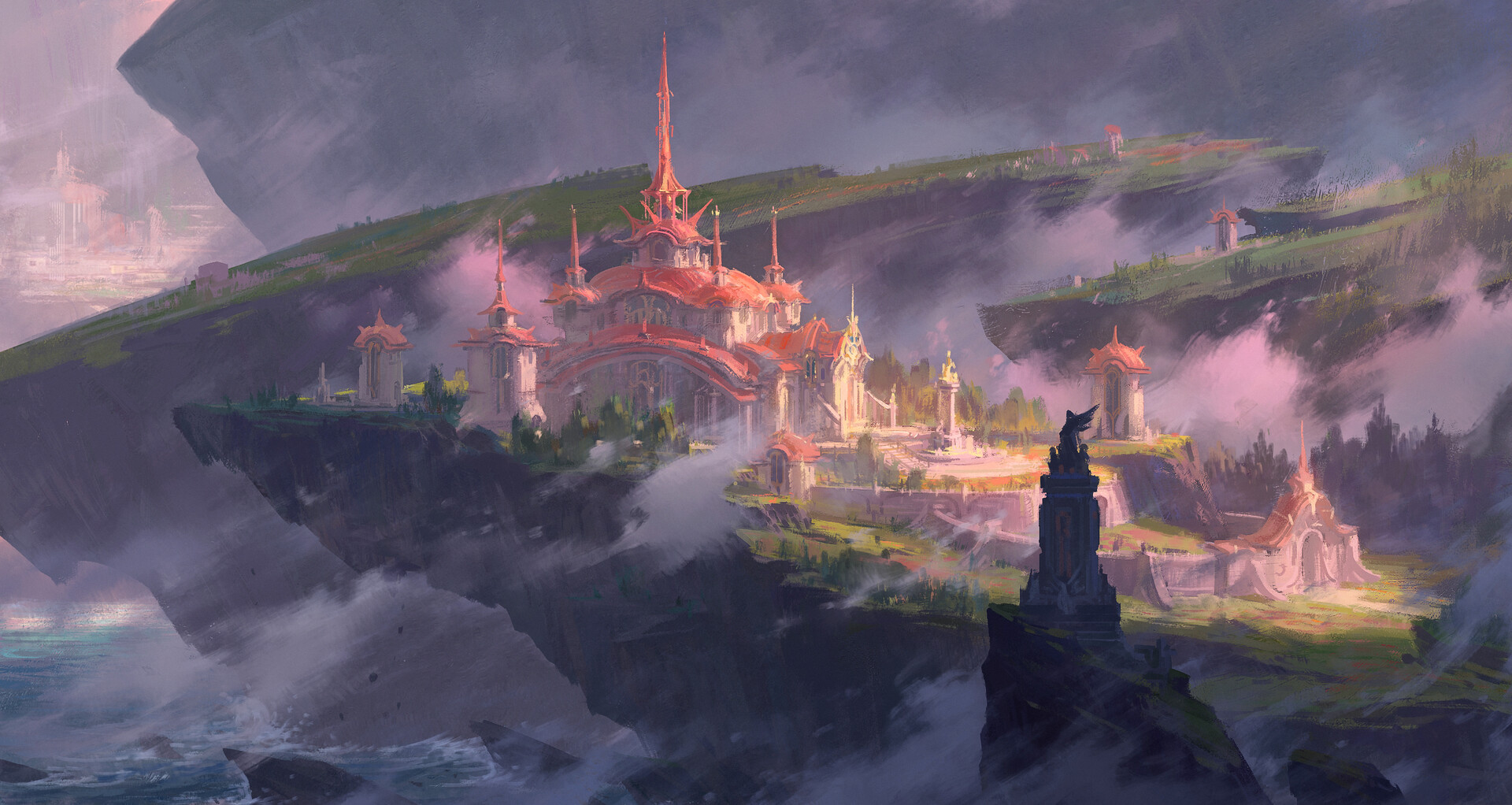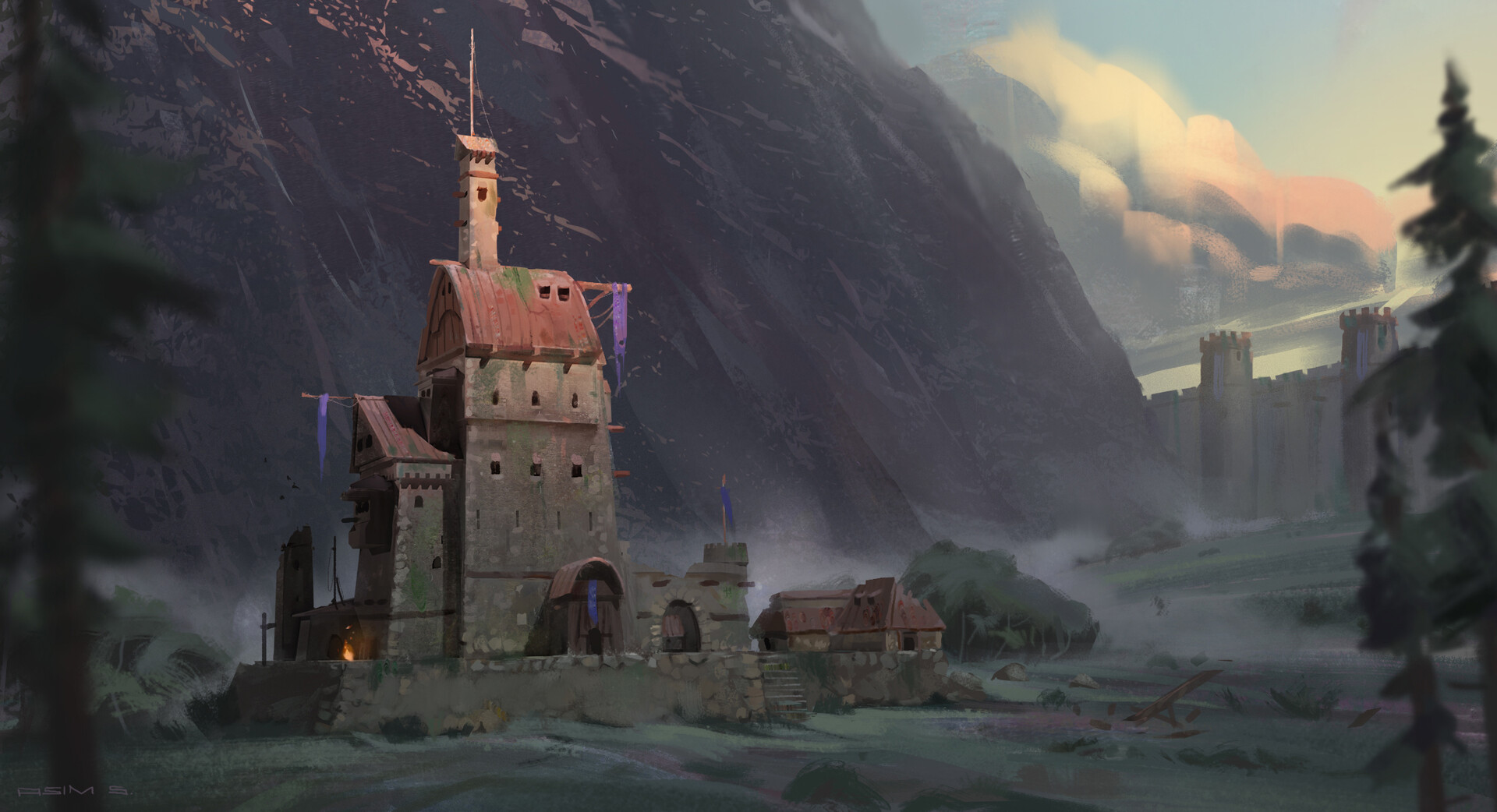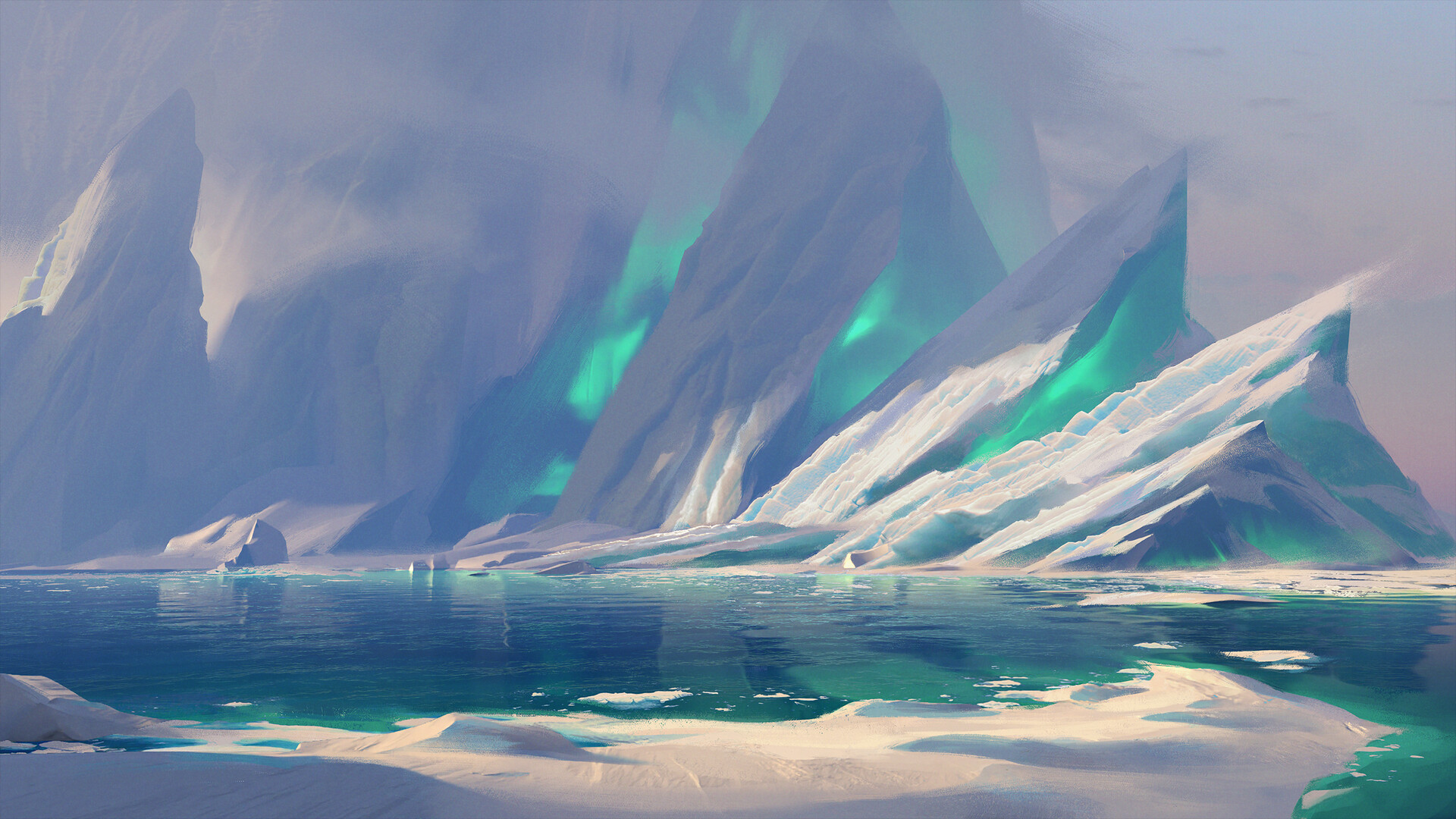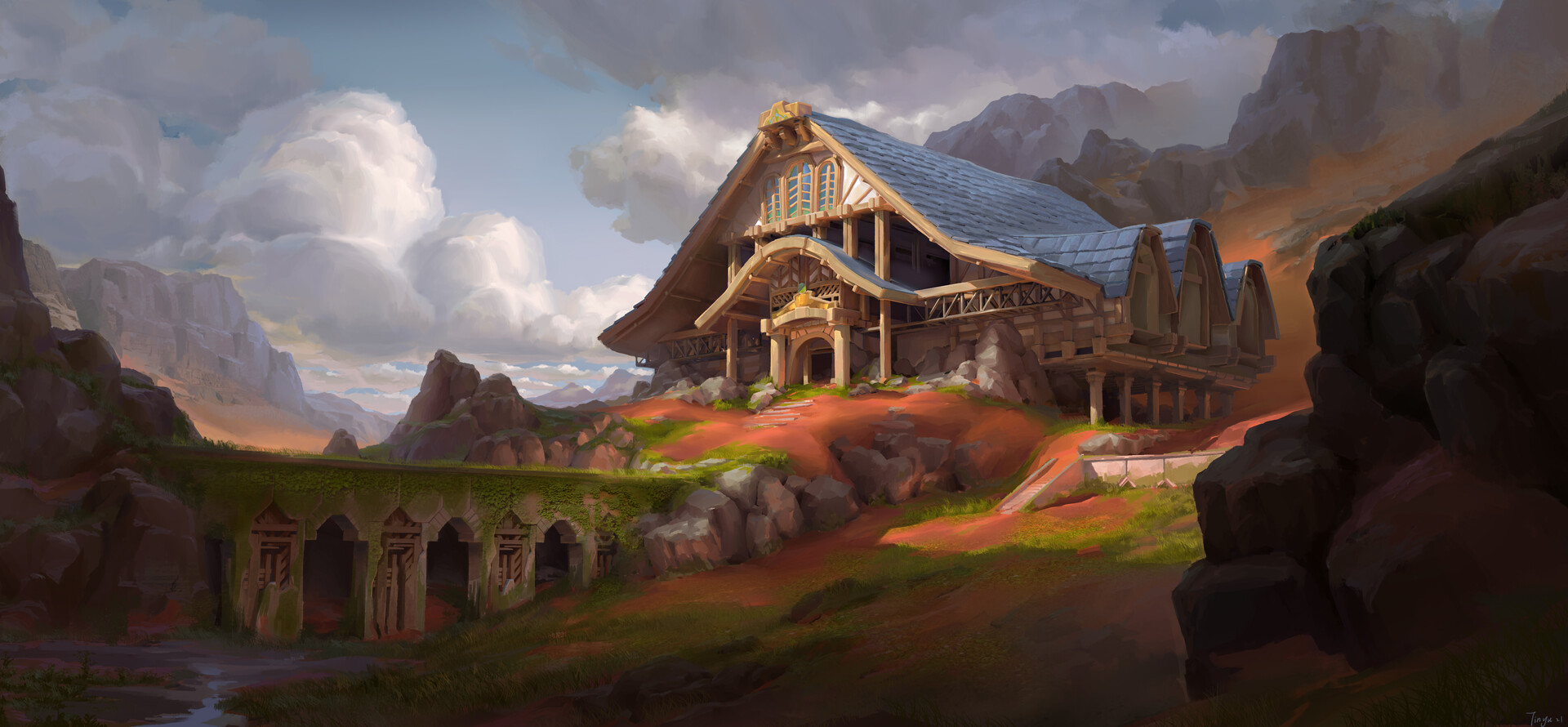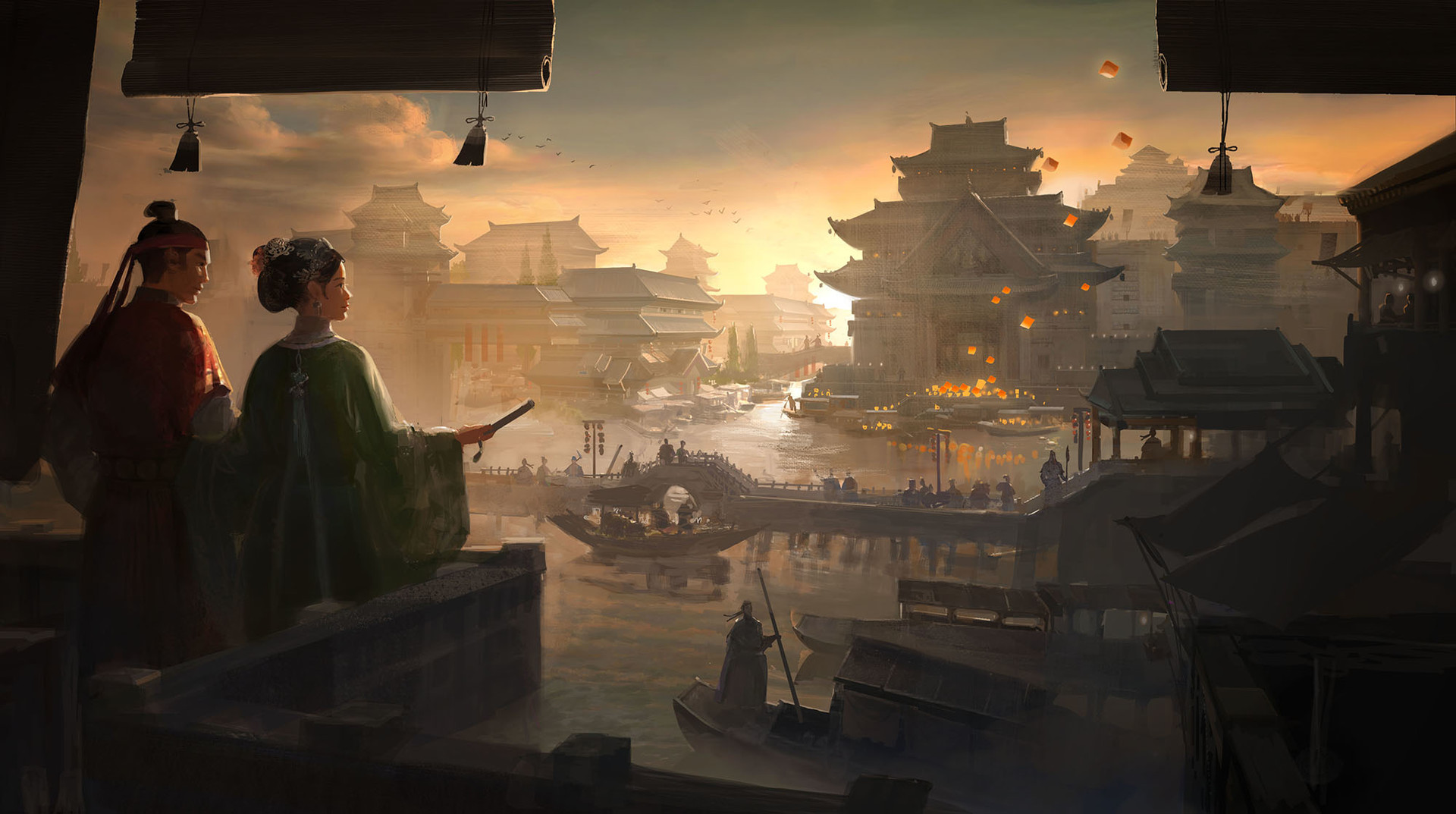Daeruin
The Eastern Imperium
Dominating the eastern regions of Sol, the Empire of Daeruin has asserted itself in recent centuries as the premier military power of the east. An empire ruled by the Dark Elves, it encompasses many people groups, including Dwarves, Shan, Orcs, and Goliaths, among others. Lands in the mountainous reaches, fertile valleys, woodlands, and eastern coastal territories of the empire were absorbed through war and promises of protection. In the west of the empire, its coastal lands are where the Dark Elves are most heavily concentrated, also boasting the capital city, Neirath, and other commercial cities. The mountainous and arctic desert regions of the empire's north and east consist mostly of wildlands, untamed and unmapped, nominally held by the empire. The few denizens of these regions are barely part of the imperial fold. The fertile south and southeast are teeming with newly conquered territories, valuable and diverse though disloyal. The empire's policies of colonialism and slavery are most significant in this region. Daeruin is known and feared across the continent for being a haven of militarism, imperialism, and supremacy.Structure
Emperor
The Emperor of Daeruin is the supreme leader of all branches of the empire, whether military or administrative. The emperor has the final say in all matters of law, imperial administration, and affairs, whether internal or foreign. Their primary role is managing the empire through direct administration, to whichever degree a particular emperor decides to get involved, appointing individuals and families to imperial positions, and gathering the great houses for deliberation on important matters. In the history and customs of Daeruin, the emperor is understood to have absolutely no equal in terms of authority.The Great Houses
Daeruinic administration is conducted in a system that is, at once, centralized and decentralized. While the emperor is the clear central authority, they work with the Great Houses, powerful families who hold significant sway and historic ties to leadership. The Great Houses are appointed by the emperor over various sectors of administration, whether colonial affairs, temple administration, military policy, or arcane instruction. While the emperor can grant or rescind authority over these domains, when it is held, a Great House, through their matriarch and appointed heads of families, can operate with remarkable freedom and efficiency to steer these aspects of administration any way they please. Each Great House controls an estate and a region, which may fluctuate depending on the fortune of a house, from great holdings in rich territories to an old estate with peasant farms. For example, in modern times, Emperor Derarose has appointed House Irenor to oversee colonial affairs and trade policy in the southern lands. In their capacity, they are free to act in any way they deem fit unless the Emperor himself were to step in. While in law, the Great Houses are absolutely subordinate to the Emperor, in effect, if the Great Houses become restless, overly ambitious, or uncooperative, an Emperor may struggle to run the empire effectively. As such, there is always a delicate balance of power swaying in either direction.Culture
Dark Elven culture prevails throughout the empire and serves as the backbone for traditions, structures, and behavior. Traditionally speaking, the culture of the empire is intensely hierarchical, matriarchal, clannish, and communal, with very little social mobility. Power is delegated between the ancient families who hold land and titles known as the Great Houses, as well as the traditional keepers of spiritual legitimacy, the priesthood of the Red Temple. The empress is always from among the Great Houses, and they are frequently, almost mandatorily, expected to make significant room for the Red Temple in state decisions. All this leads to Daeruin maintaining a culture based around established channels of authority and expectations of obedience to tradition and structure. Loyalty to one's family is paramount, and abandonment of this virtue is considered a social death sentence. In terms of family structure, the culture is matriarchal, favoring women as heads of the families and the river through which wealth, land, and titles flow, from mother to daughter. Men are able to inherit, though only after all feminine possibilities have been minded. As men often stand to gain nothing from their inheritance, many leave Daeruin in search of adventure.
Slavery remains part and parcel of Daeruinic life. Any city can be expected to have at least one slave market, where humanoids are treated as goods to be sold. While many ancestries suffer slavery in the empire, none face it as systemically as the Snow Elves. Having been kidnapped from their homeland for generations, the Snow Elves languish in bondage throughout the empire and are treated worse than animals in many cases. While free Snow Elves do exist, even they face significant discrimination and persecution ranging from denial of entry to several establishments to severely violent crimes against them during times of unrest. This generational servitude has persisted so long, visitors and scholars have observed that the Snow Elves of Daeruin may well be considered a splinter culture from the Snow Elves of Mistvall. These scholars cite differences in language, mannerisms, and beliefs surrounding violence, justice, and faith. There has also been observed an acute, eerie sense of sadness when a Snow Elf from their homeland encounters their kin who have been born into slavery in Daeruin. In Mistvall, the Snow Elves long for the day they can bring justice to their kinfolk, creating a sort of mythology of their brethren across the sea. Though when the two encounter each other, Mistvallic Snow Elves quickly realize how little they share in common with Daeruinic Snow Elves, having been severed from their home culture for generations, forced to adapt to their cruel surroundings.
Faith plays a curious role in the Empire. While the Red Temple holds significant sway in Daeruinic politics, culture, and history, the gods of The Infernal Order are not looked upon by the majority of the empire's residents with devotion. While most worship these gods, they do so out of a bargain-like transactional relationship based on supplication to the gods in exchange for boons or at least protection from their ire. While some populations or individuals within imperial borders may be more overtly faithful, the majority, especially the Dark Elves, look upon the gods with a mix of resentment and opportunism. This strange dynamic with their deities tends to confuse outsiders who often wrongfully assume Dark Elves are fanatically devoted to the Infernals. On the contrary, the Dark Elves consider the Infernals a challenge to overcome, but also their most ancient ancestors.
Territories
Western Coasts
The western region of the empire is home to the Dark Elves, the ruling class and dominant race of Daeruin. These lands, called the Hseian Highlands, are mildly fertile, strategically rugged, and protected by the Verdant Peaks on their eastern flank. As the ancestral land of the Dark Elves, this region faces the sea and is populated by commercial cities and towns dotting the coastline, with farmlands situated throughout the interior. Hill farms and coastal fisheries sustain the highlands, keeping the population well-fed and productive. Though its development cannot be hailed from its land alone. As the commercial and imperial center of Daeruin, all other lands of the empire pay taxes and ferry tribute to the west, keeping it rich in gold, slaves, and goods. Its mild weather and bustling markets keep the region lucrative and attractive to migrants from within and outside the empire. Its cities are diverse in ancestry, though Dark Elves rule in all cases.Northern and Central Mountains
The heartlands of the empire are mountainous, rugged, and cold. Arcing mountains and valleys dominate this region, making it the strategic center of the empire. Forts and castles are as common as settlements and trading posts. Naturally, it is also the home of the fabled Wyrmguard. The north of this region is inhabited by small villages and middling settlements with narrow trading prospects based around whaling, walrus tusks, lucrative mines, and the like. Down the mountain valleys, Duervale remains the largest city of the region, an ancient Dwarven city assimilated into the empire through genocide and siege. While Dark Elves are prominent, especially in the north, Dwarven survivors as well as conquered humans live throughout the central valleys.Eastern Wastes
Beyond the frozen peaks of the central lands, the eastern reaches of the empire are best described as empty wastes with nothing of value to civilized folk. Arctic deserts, desolate mountains, and half-civilized tribes barely known to the empire are all the explorers of the empire have found. The region would be considered essentially wastelands if not for the presence of draconic activity deep in the mountains, especially around Mt. Valraath, a volcano which keeps the empire's citizens wary. It is said tribes of humanoids live around and in subjugation to this draconic center, but all information surrounding these regions are outdated or speculative at best. While the empire claims it and some of its most adventurous attempt to map it, this region is part of the imperial fold in name only.Southern Forests
South of Duervale, the imperial territory gives way to thick forests, rocky hills, and fair riverlands. A few generations ago, these lands belonged to Halflings, Gnomes, Humans, and others, though they were conquered by the Dark Elves under Derarose in living memory of the long-lived races. These settlements remain standing and continue to be populated by those who originally founded them, though they exist under the frontier purview of the empire. As the lands facing the empire's southern neighbors, they are heavily fortified and geared more towards military matters than trade. That being said, they have proven to be relatively loyal to their new rulers, especially when compared to the more lucrative lands to the southeast. An exception to this tendency of relative loyalty are the Minotaurs who recently migrated by force into the hills and woodlands, threatening the aforementioned populations and the stability of the empire at large. Attempts to purge such migrations have failed.Southeastern Islands
Off the eastern coast of the continent, several islands inhabited by Shan and other maritime peoples were assimilated forcefully into the empire. In these lands, imperial focus is efficiently centralized toward trade value. Maximizing production of lucrative trade resources, including coffee, nutmeg, exotic spices, timber, tea, sugar, pepper, and so on, has been left to House Irenor, one of the Great Houses of Daeruin. A noble house known for cruelty and a profound lack of scruples, the region produces much of the empire's luxury goods but remains a haven of slavery, piracy, and genocide, to the disgust of nearby powers. Slave revolts and pirate raids are frequent. The region is considered dangerous, though deeply attractive for adventurers with a flexible morality.
Type
Geopolitical, Empire
Capital
Demonym
Daeruinic
Leader
Leader Title
Head of State
Government System
Monarchy, Theocratic
Power Structure
Feudal state
Economic System
Market economy
Official State Religion
Location
Controlled Territories
Notable Members
Related Ethnicities

